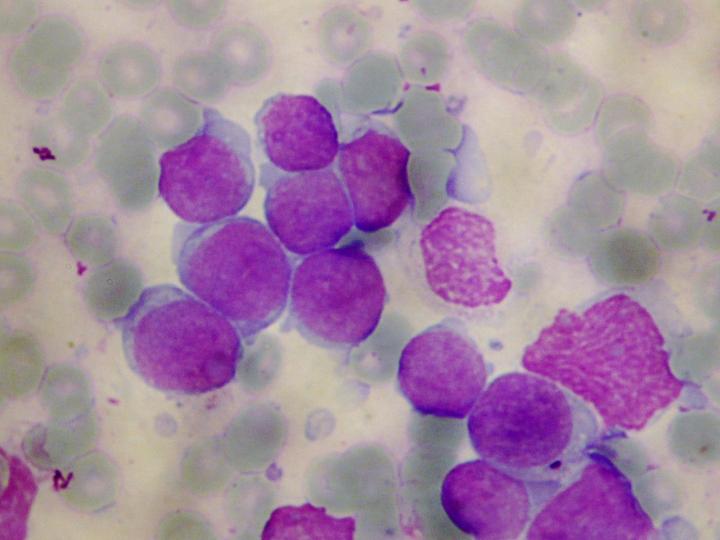

This image shows T-cell acute lymphoblastic leukemia.
Credit: The Saban Research Institute of Children's Hospital Los Angeles
Acute lymphoblastic leukemia (ALL) is the most common pediatric cancer. This disease includes two subtypes, B-cell and T-cell leukemia, depending upon the type of white blood cell where the leukemia originates. For B-cell ALL, the presence of a small number of remaining leukemia cells, called minimal residual disease (MRD), predicts risk of relapse and is therefore used to guide treatment decisions. A team of investigators at Children's Hospital Los Angeles, led by Hisham Abdel-Azim, MD, conducted a historical cohort analysis and found that MRD alone, at the end of induction therapy, was not predictive of risk or outcome in children with T-ALL. Results of the study will be published online in the journal Pediatric Blood & Cancer on May 14, 2015.
“Until now, the dogma has been that for patients with leukemia who have minimal residual disease at the end of induction, we need to intensify their treatment which also increases side effects,” said Abdel-Azim, who is also an assistant professor of Pediatrics at the Keck School of Medicine of the University of Southern California. “We have found for T-ALL, patients have excellent outcomes without therapy intensification and its associated toxicities.”
Following induction therapy, minimal residual disease was determined by flow cytometry for 33 children with newly diagnosed T-ALL and 19 were found to have MRD. At a median of four years follow up, there were no relapses among the patients with MRD and 32 of 33 patients remained in complete remission.
The investigators concluded that clearance of leukemia cells from the blood is slower in patients with T-ALL compared to patients with B-ALL; however, leukemia cells ultimately are cleared without changes in therapy.
###
Additional contributors to the study include Chintan Parekh, MD, and Paul S. Gaynon, MD, both of Children's Center for Cancer and Blood Diseases, Children's Hospital Los Angeles and the Keck School of Medicine of USC.
Funding was provided in part by the St. Baldrick's Foundation, NIH K12HD052954 award, and the Joseph Drown Foundation.
About Children's Hospital Los Angeles
Children's Hospital Los Angeles has been named the best children's hospital on the West Coast and among the top five in the nation for clinical excellence with its selection to the prestigious U.S. News & World Report Honor Roll. Children's Hospital is home to The Saban Research Institute, and one of America's premier teaching hospitals through its affiliation since 1932 with the Keck School of Medicine of the University of Southern California.
For more information, visit CHLA.org. Follow us on our blog at http://researchlablog.
Media contact: Ellin Kavanagh, ekavanagh@chla.usc.edu 323-361-8505 or 323-361-1812












